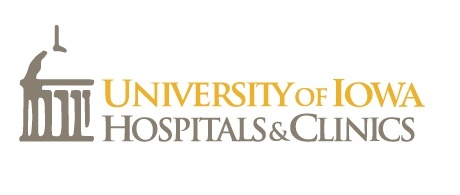A Study of ALT-801 in Combination With Cisplatin and Gemcitabine in Muscle Invasive or Metastatic Urothelial Cancer
| Status: | Active, not recruiting |
|---|---|
| Conditions: | Cancer, Cancer, Cancer |
| Therapuetic Areas: | Oncology |
| Healthy: | No |
| Age Range: | 18 - Any |
| Updated: | 4/21/2016 |
| Start Date: | June 2011 |
| End Date: | October 2017 |
A Phase Ib/II Trial of ALT-801 in Combination With Cisplatin and Gemcitabine in Muscle Invasive or Metastatic Urothelial Cancer
This is a Phase Ib/II, open-label, multi-center, competitive enrollment and dose-escalation
study of ALT-801 in a biochemotherapy regimen either containing cisplatin and gemcitabine or
containing gemcitabine alone in patients who have muscle invasive or metastatic urothelial
cancer of bladder, renal pelvis, ureters and urethra. The purpose of this study is to
evaluate the safety, determine the maximum tolerated dose (MTD) and the recommended dose
(RD), and assess the anti-tumor response of ALT-801 in combination with cisplatin and
gemcitabine or ALT-801 in combination with gemcitabine alone. The pharmacokinetic profile of
ALT-801 in combination with cisplatin and gemcitabine will also be assessed. The study
includes a dose escalation phase (Phase Ib) and a dose expansion phase (Phase II). Phase II
has two treatment groups, Expansion Group 1 and Expansion Group 2. Expansion Group 2 is for
platinum-refractory patients, consisting of two treatment arms based on the patient's renal
function. Patients will enroll to Expansion Group 2 after stage 1 of the Group 1 expansion
is complete.
study of ALT-801 in a biochemotherapy regimen either containing cisplatin and gemcitabine or
containing gemcitabine alone in patients who have muscle invasive or metastatic urothelial
cancer of bladder, renal pelvis, ureters and urethra. The purpose of this study is to
evaluate the safety, determine the maximum tolerated dose (MTD) and the recommended dose
(RD), and assess the anti-tumor response of ALT-801 in combination with cisplatin and
gemcitabine or ALT-801 in combination with gemcitabine alone. The pharmacokinetic profile of
ALT-801 in combination with cisplatin and gemcitabine will also be assessed. The study
includes a dose escalation phase (Phase Ib) and a dose expansion phase (Phase II). Phase II
has two treatment groups, Expansion Group 1 and Expansion Group 2. Expansion Group 2 is for
platinum-refractory patients, consisting of two treatment arms based on the patient's renal
function. Patients will enroll to Expansion Group 2 after stage 1 of the Group 1 expansion
is complete.
Bladder cancer is the fourth most common malignancy in men and the ninth most common in
women in the US, with an estimated 68,810 new cases and 14,070 deaths for the year 2008.
Approximately 90% to 95% of newly diagnosed patients are with transitional cell carcinomas
(TCC). Approximately 20% to 25% contain advanced (muscle invasive or metastatic) disease.
Muscle invasive bladder cancer is life threatening. Clinical trials have demonstrated that
TCC is a chemotherapy-sensitive malignancy. Most current cancer treatment strategies involve
the use of chemotherapeutic or biological drugs that have a low therapeutic ratio. The
limitations are a consequence of effects of the therapeutic drug on normal tissues. One
approach to control systemic exposure effects is to target the drug itself into the site of
the tumor. For example, antibodies have been developed for use as tumor targeting agents and
have had success in the clinic. However, despite the promise of antibody-based
immunotherapy, there are limitations with these class of reagents. Even so, immunotherapy
remains a promising approach to treat cancer.
One strategy that has received attention is treatment with cytokines such as IL-2 to enhance
anti-tumor immunity. IL-2 has stimulatory effects on a number of immune cell types including
T and B cells, monocytes, macrophages, lymphokine-activated killer cells (LAK) and natural
killer (NK) cells. Based on the ability of IL-2 to provide durable curative anti-tumor
responses, systemic administration of IL-2 has been approved to treat patients with
metastatic melanoma or renal carcinoma. Unfortunately, the considerable toxicity associated
with this treatment makes it difficult to achieve an effective dose at the site of the tumor
and limits the population that can be treated. Thus, there is critical need for innovative
strategies that enhance the effects of IL-2, to reduce its toxicity without compromising the
clinical benefit, and to treat other diagnoses.
The study drug, ALT-801, is a biologic compound of interleukin-2 (IL-2) genetically fused to
a humanized soluble T-cell receptor directed against the p53-derived peptides expressed on
tumor cells. The p53 protein is one of the most important factors that protects from
developing cancer and is also one of the most frequently mutated genes in many cancers,
which include muscle-invasive bladder cancer. For any given cancer type, p53 dysfunction
generally correlates with poor prognosis versus other the same site-of-origin. In some
tumors, p53 mutation and over-expression also is associated with resistance to chemotherapy.
This study is to further evaluate whether directing IL-2 activity using ALT-801 to the
patient's tumor sites that over-express p53 results in clinical benefits
women in the US, with an estimated 68,810 new cases and 14,070 deaths for the year 2008.
Approximately 90% to 95% of newly diagnosed patients are with transitional cell carcinomas
(TCC). Approximately 20% to 25% contain advanced (muscle invasive or metastatic) disease.
Muscle invasive bladder cancer is life threatening. Clinical trials have demonstrated that
TCC is a chemotherapy-sensitive malignancy. Most current cancer treatment strategies involve
the use of chemotherapeutic or biological drugs that have a low therapeutic ratio. The
limitations are a consequence of effects of the therapeutic drug on normal tissues. One
approach to control systemic exposure effects is to target the drug itself into the site of
the tumor. For example, antibodies have been developed for use as tumor targeting agents and
have had success in the clinic. However, despite the promise of antibody-based
immunotherapy, there are limitations with these class of reagents. Even so, immunotherapy
remains a promising approach to treat cancer.
One strategy that has received attention is treatment with cytokines such as IL-2 to enhance
anti-tumor immunity. IL-2 has stimulatory effects on a number of immune cell types including
T and B cells, monocytes, macrophages, lymphokine-activated killer cells (LAK) and natural
killer (NK) cells. Based on the ability of IL-2 to provide durable curative anti-tumor
responses, systemic administration of IL-2 has been approved to treat patients with
metastatic melanoma or renal carcinoma. Unfortunately, the considerable toxicity associated
with this treatment makes it difficult to achieve an effective dose at the site of the tumor
and limits the population that can be treated. Thus, there is critical need for innovative
strategies that enhance the effects of IL-2, to reduce its toxicity without compromising the
clinical benefit, and to treat other diagnoses.
The study drug, ALT-801, is a biologic compound of interleukin-2 (IL-2) genetically fused to
a humanized soluble T-cell receptor directed against the p53-derived peptides expressed on
tumor cells. The p53 protein is one of the most important factors that protects from
developing cancer and is also one of the most frequently mutated genes in many cancers,
which include muscle-invasive bladder cancer. For any given cancer type, p53 dysfunction
generally correlates with poor prognosis versus other the same site-of-origin. In some
tumors, p53 mutation and over-expression also is associated with resistance to chemotherapy.
This study is to further evaluate whether directing IL-2 activity using ALT-801 to the
patient's tumor sites that over-express p53 results in clinical benefits
ENTRY CRITERIA:
DISEASE CHARATERISTICS:
- Muscle invasive or metastatic urothelial cancer of bladder, ureters, renal pelvis,
and urethra
- Histologically or cytologically confirmed with a clinical plan that would potentially
include cisplatin* plus gemcitabine systemic therapy or with disease refractory to a
first-line platinum-based therapy (as defined in the protocol).
* Does not apply to patients screened for Phase II expansion
- Surgically incurable
PRIOR/CONCURRENT THERAPY:
- No concurrent radiotherapy, other chemotherapy, or other immunotherapy
- Must have recovered from side effects of prior treatments
- If prior Proleukin® treatment, must have had a clinical benefit
- No use of other investigational agents within 30 days of start or concurrently
PATIENT CHARACTERISTICS:
Age
- ≥ 18 years
Performance Status
- ECOG 0 or 1
Bone Marrow Reserve
- Absolute neutrophil count (AGC/ANC) ≥ 1,500/uL
- Platelets ≥ 100,000/uL
- Hemoglobin ≥ 10g/dL
Renal Function
- Glomerular Filtration Rate (GFR):
- ≥ 50mL/min/1.73m^2 for cisplatin-containing regimen
- ≥ 40mL/min/1.73m^2 for non-cisplatin-containing regimen
Hepatic Function
- Total bilirubin ≤ 1.5 X ULN
- AST, ALT, ALP ≤ 2.5 X ULN, or ≤ 5.0 X ULN (if liver metastases exists)
- PT INR ≤ 1.5 X ULN
Cardiovascular
- No congestive heart failure < 6 months
- No unstable angina pectoris < 6 months
- No myocardial infarction < 6 months
- No history of ventricular arrhythmias
- No NYHA Class > II CHF
- Normal cardiac stress test required for subjects who are ≥ 50 years old, or have a
history of EKG abnormalities, or have symptoms of cardiac ischemia or arrhythmia
- No uncontrolled hypertension
Pulmonary
- Not receiving chronic medication for asthma
- Normal clinical assessment of pulmonary function
Hematologic
- No evidence of bleeding diathesis or coagulopathy
Other
- Negative serum pregnancy test if female and of childbearing potential
- No women who are pregnant or nursing
- Subjects, both females and males, with reproductive potential must agree to use
effective contraceptive measures for the duration of the study
- No known autoimmune disease other than corrected hypothyroidism
- No known prior organ allograft or allogeneic transplantation
- Not HIV positive
- No active systemic infection requiring parenteral antibiotic therapy
- No ongoing systemic steroid therapy required
- No history or evidence of CNS disease (Controlled brain metastases treated with
radiation therapy or surgery where the disease has been clinically stable for a
period of a least 3 months before screening is allowed)
- No psychiatric illness/social situation
- No other illness that in the opinion of the investigator would exclude the subject
from participating in the study
- Must provide informed consent and HIPAA authorization and agree to comply with all
protocol-specified procedures and follow-up evaluations
We found this trial at
16
sites
Click here to add this to my saved trials
Emory University Emory University, recognized internationally for its outstanding liberal artscolleges, graduate and professional schools,...
Click here to add this to my saved trials
Univ of Minnesota With a flagship campus in the heart of the Twin Cities, and...
Click here to add this to my saved trials
Washington University Washington University creates an environment to encourage and support an ethos of wide-ranging...
Click here to add this to my saved trials
12902 USF Magnolia Dr
Tampa, Florida 33612
Tampa, Florida 33612
(888) 663-3488

H. Lee Moffitt Cancer Center & Research Institute Moffitt Cancer Center in Tampa, Florida, has...
Click here to add this to my saved trials
Click here to add this to my saved trials
Click here to add this to my saved trials
Click here to add this to my saved trials
Click here to add this to my saved trials
University of Iowa Hospitals and Clinics University of Iowa Hospitals and Clinics—recognized as one of...
Click here to add this to my saved trials
Click here to add this to my saved trials
Click here to add this to my saved trials
Thomas Jefferson University Hospital Our hospitals in Center City Philadelphia share a 13-acre campus with...
Click here to add this to my saved trials
Click here to add this to my saved trials
Click here to add this to my saved trials
Click here to add this to my saved trials




